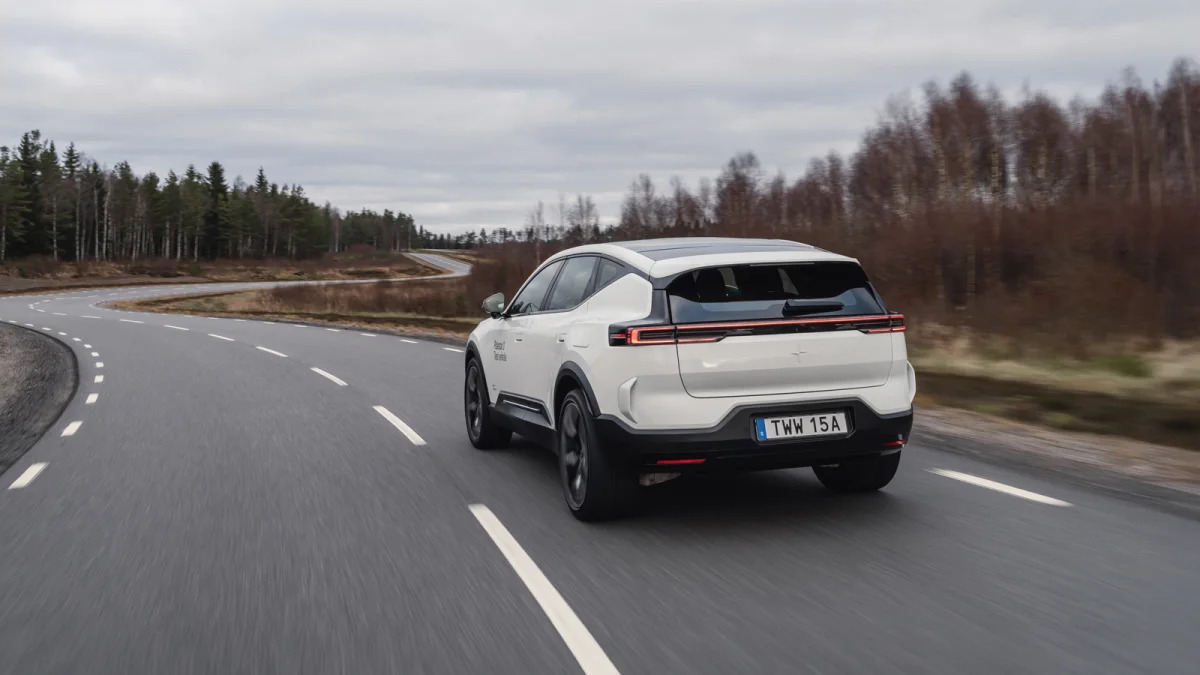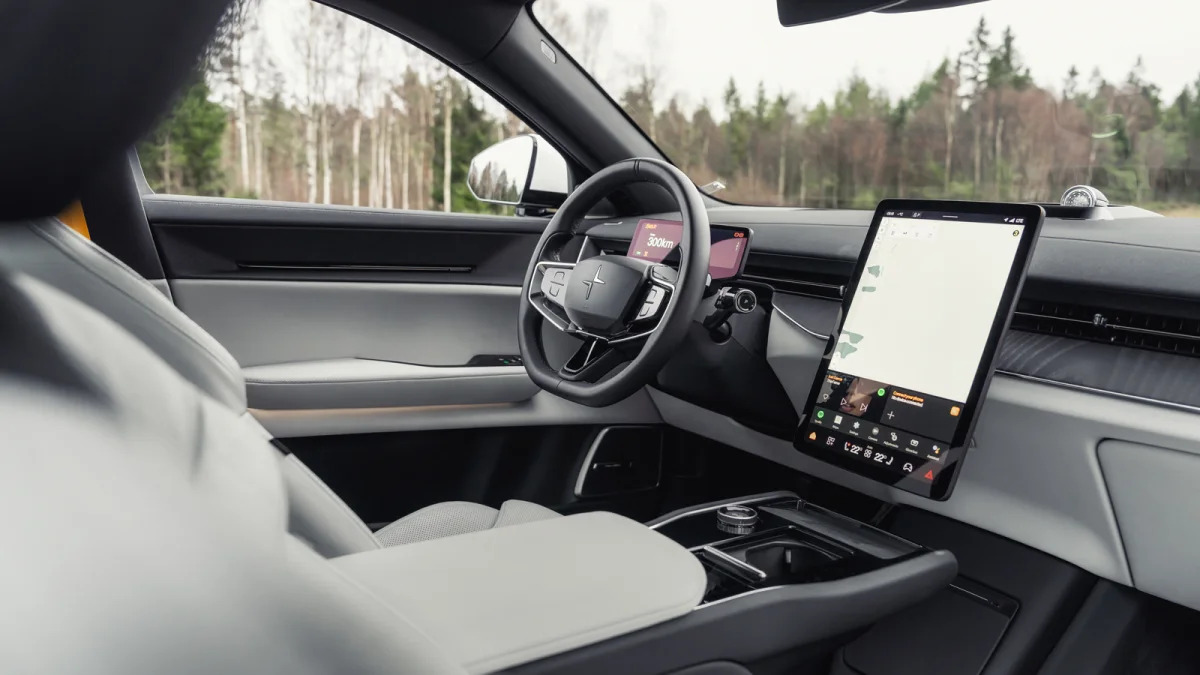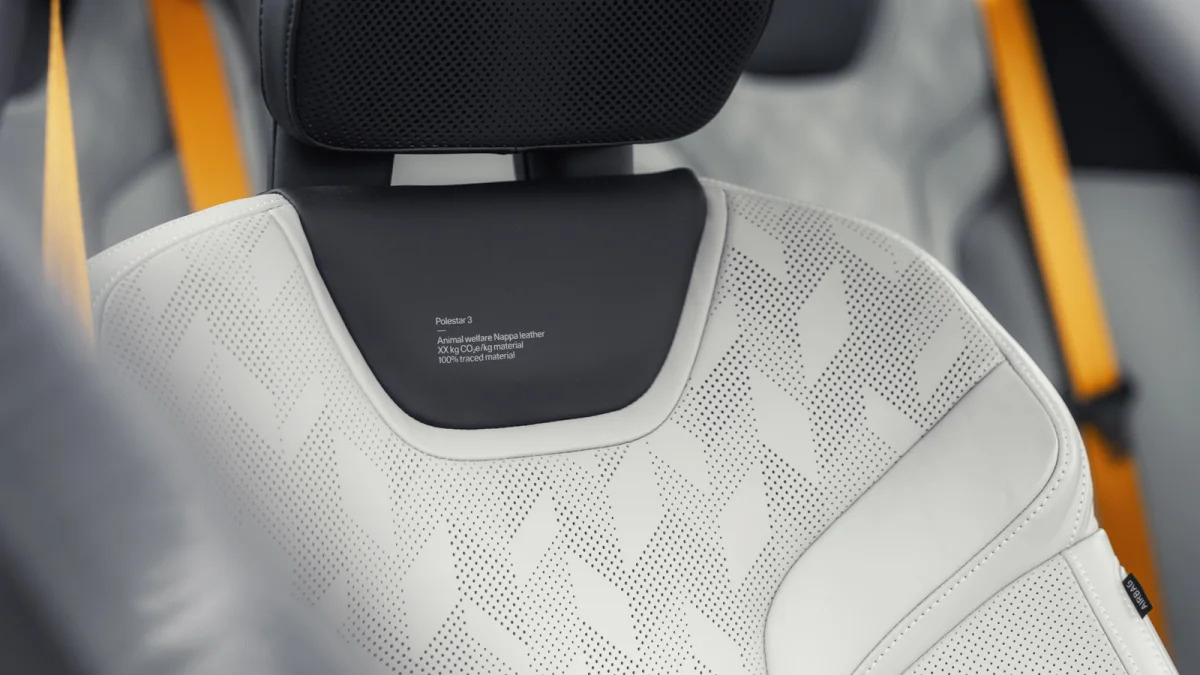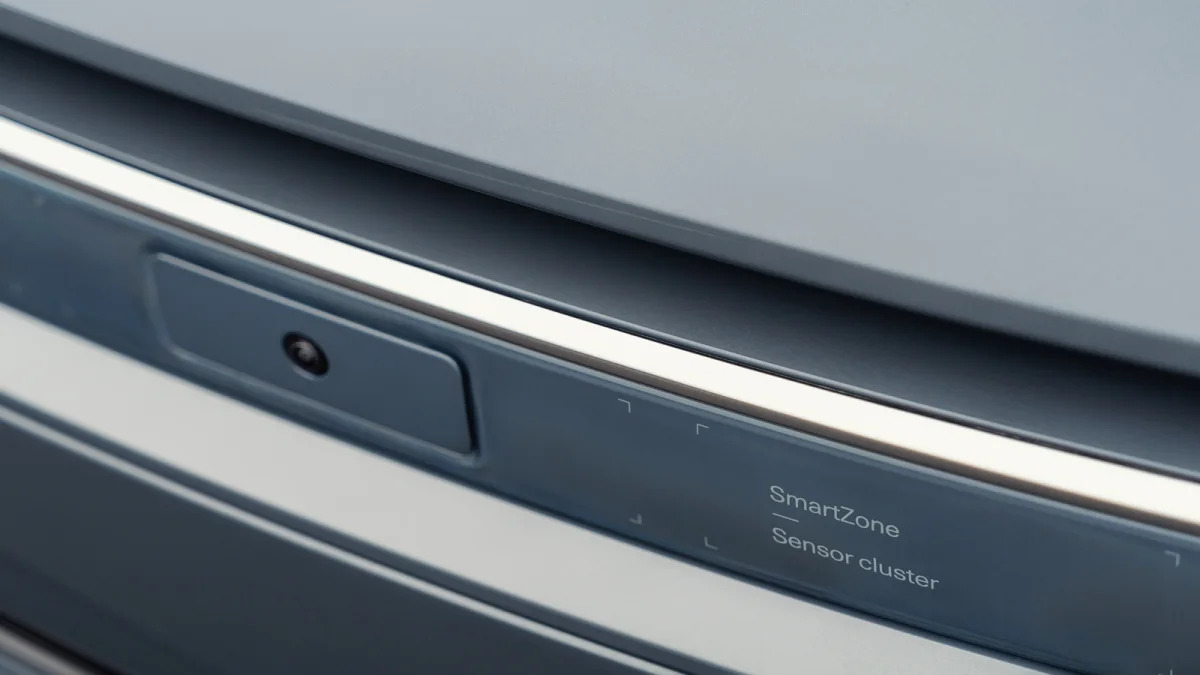SANDHULT, Sweden — To get an idea of how Polestar will evolve in the coming years, look no further than the 3. Referred to as the brand’s core, it inaugurates an approach to design, technology, and handling that will trickle down to future models. It also takes Polestar out of the tiny pool of carmakers that don’t offer an SUV, so it will play a crucial role in helping the young Volvo off-shoot increase its sales on the American market.
What took Polestar so long to enter the SUV segment? I asked company CEO Thomas Ingenlath.
“Somewhere you have to start the company, and you cannot have everything at the same time. If we had just the 3, people might come up and ask me, ‘Thomas, wouldn’t it be nice to have a more affordable Polestar?’ That’s the 2. Once you have everything it’s great, but you have to build it up bit by bit.”
Polestar unveiled the 3 in October 2022, so we already know what the SUV looks like; no surprises here and no camouflage needed. Visually, it represents a shift away from the 2, which is distinctly Volvo-like, the result of it being based on a Volvo design concept that never made it to production. The Polestar 3, then, represents the future, with its design language already permeating other models, including an upcoming sport sedan called 5.
While designers are tugging Polestar out of Volvo’s shadow, they’re not severing all ties.


Polestar 3 and Volvo EX90
“The 3 is uniquely Polestar, and with the 4, 5, and 6 we’re really departing from Volvo, but we also like to keep a little bit of a bridge to Volvo as a family because there is a lot to gain,” said Maximilian Missoni, the head of Polestar’s design department, adding that people trust Volvo. “The connection to Volvo is a good thing; it sets Polestar apart from many other newcomers that don’t have this kind of trust.”
It’s a similar story inside, where specific styling cues (such as the wood trim on the dashboard) and a generally minimalist approach to design give off a distinct whiff of Volvo-ness. What separates the EX90 and the 3, then? How do you avoid automotive cannibalism considering both EVs are built on the same basic SPA2 architecture, pegged in the same price bracket, and feature relatively close dimensions?
“We’re focused on driving dynamics, while Volvo is focused on versatility,” Missoni said, adding, “We share a focus on safety.”
You can see this differentiation in the choice of body style. While the EX90 – like its gas-powered counterpart, the XC90 – will be offered with three rows of seats, the 3 has only two rows and was shaped accordingly with a low, sloping roof line. As a bonus, making the 3 two-row-only gives rear-seat passengers plenty of space.

Polestar developed its own user interface to further set itself apart from Volvo; it went as far as creating its own icons for functions like the heated seats and the various warning messages, and it designed a font called Polestar Unica. Android-powered and displayed on a portrait-oriented 14.5-inch touchscreen, the infotainment system relies on tiles rather than lists to convey information clearly and quickly. That’s good thinking on Polestar’s part because there’s not much in the way of physical buttons in the 3. There’s a volume knob, thankfully, but even simple tasks like opening the glovebox require tapping the screen. I’m told the tradeoff is that owners will have the option of locking the glovebox by setting a password.
At launch, buyers will have two variants to choose from. The standard 3 ships with a dual-motor all-wheel-drive system rated at 489 horsepower and 620 pound-feet of torque, while the Performance Pack-equipped model posts figures of 517 and 671, respectively. Both drivetrains use a giant, 111-kilowatt-hour lithium-ion battery pack compatible with 250-kilowatt fast-charging (as well as 11kW home charging), and Polestar expects the EPA’s range estimates to come in at up to 300 and 270 miles, respectively. It’s not farfetched to assume that a smaller battery pack and a two-wheel-drive powertrain could join the lineup later in the production run.


My time behind the wheel of a pre-production Polestar 3 was limited to about a dozen laps of a test track nestled deep within Volvo’s Hällered proving grounds in southwestern Sweden. This huge, 50-year-old complex features nearly every type of road surface imaginable, including a Los Angeles-area freeway (minus the traffic), Belgium cobblestones, and what a test driver referred to as a replica of Sweden’s worst road. The track I drove on looked like the average two-lane road in the Swedish countryside, meaning a little twisty and a little hilly. The kind of road you wish didn’t have a speed limit — and in this case there wasn’t one.
The 3’s steering immediately caught me by surprise: It’s quicker and more precise than you’d expect to find in an electric, 193-inch-long family hauler that tips the scale at nearly 5,900 pounds in its heaviest configuration. Joakim Rydholm, the brand’s head of chassis development, tells me that’s intentional.
“Everything starts from the steering. It’s so important when you set up a car,” he explains.
While the 3 weighs more than many full-size pickups, the bulk of the weight lies between the axles and below the passenger compartment. This layout helps handling in two ways. First, it gives this big SUV the same center of gravity as the Polestar 1, which was a low-slung coupe. Second, it unlocks a 50:50 weight distribution. Engineers then added a height- and firmness-adjustable air suspension system and a dual-clutch torque vectoring differential on the rear axle to dial in handling that’s almost sedan-like. You’re not going to mistake the 3 for a Subaru BRZ, but it’s not your average floaty, overgrown hatchback, either.

This is the type of handling we can expect from future Polestar models, regardless of their size or the segment they compete in – and there are a few cars in the pipeline. Rydholm notes that he’s not trying to copy competitor A’s suspension setup or competitor B’s steering feel.
“If you want (a rival’s) DNA, buy (the rival’s) car,” he said. His job is to create Polestar’s DNA. He’s starting from scratch, there’s no last-generation 3 to build on, but he brings a vast amount of experience to the table. He worked for Polestar when the firm made (and raced!) hot-rodded Volvo models, before it morphed into a full-fledged brand. He notably helped develop the Polestar-branded variants of the C30 and the second-generation S60.
At a more leisurely pace, the 3 drives like a high-end EV. It’s quick and linear off the line, quiet and stable at highway speeds, and comfortable regardless of what’s shown on the speedometer. It can also become front-wheel-drive, because the rear motor shuts off to improve efficiency when the power and grip it delivers aren’t needed. However, as in many electric cars, the brake pedal doesn’t feel 100% natural. It doesn’t immediately summon the hydraulic parts of the braking system: regeneration slows down the car until about 0.3Gs, which is when the pads begin to clamp the rotors. At least the transition is nearly imperceptible and the brakes, including Brembo-sourced four-piston front calipers, are powerful.
Speaking of regeneration, an icon conveniently placed on the bottom part of the infotainment system’s touchscreen lets the driver choose one of three one-pedal driving modes called Off, Low, and Standard, respectively. Standard is strong enough that you don’t need to use the brake pedal in normal driving.

Will anyone off-road the 3? Probably not, but it can handle relatively tough terrain. Volvo’s off-road course wasn’t a challenge for it. Even a partially frozen 60% climb that didn’t look safe at all couldn’t stop it. As a passenger, I instinctively reached for the grab handle thinking, “Oh damn, this is not going to end well.” It ended just fine, and I didn’t find the grab handle because it’s not there. Polestar decided they’re useless and unnecessarily take up space, so it shipped them off to the pantheon of automotive history.
It wouldn’t be fair to provide a verdict on the 3 after driving a pre-series car on a test track; what I drove isn’t exactly what you’ll find in showrooms when deliveries start in 2024, and the odds of a future owner ending up on a Volvo-owned testing facility in a remote part of Sweden are about as high as the odds of seeing a 4.0-liter V8-powered version of the 3. My initial impressions are positive, however. Polestar has created an electric SUV that’s engaging to drive without compromising roominess or practicality.
On sale now, the 2024 Polestar 3 carries a base price of $85,300, including the $1,400 destination charge. That figure includes the convenience- and luxury-stuffed Plus Pack and the Pilot Pack (basically adaptive cruise control, lane-centering steering assist and a head-up display) that will join the list of options later in the production run. The Performance Pack costs $6,000. Note that the first examples that will turn a wheel on our roads will come from Volvo’s factory in Chengdu, China. Production in the five-year-old Charleston, South Carolina, facility that currently builds the S60 sedan is scheduled to begin halfway through 2024.















































Sign in to post
Please sign in to leave a comment.
Continue